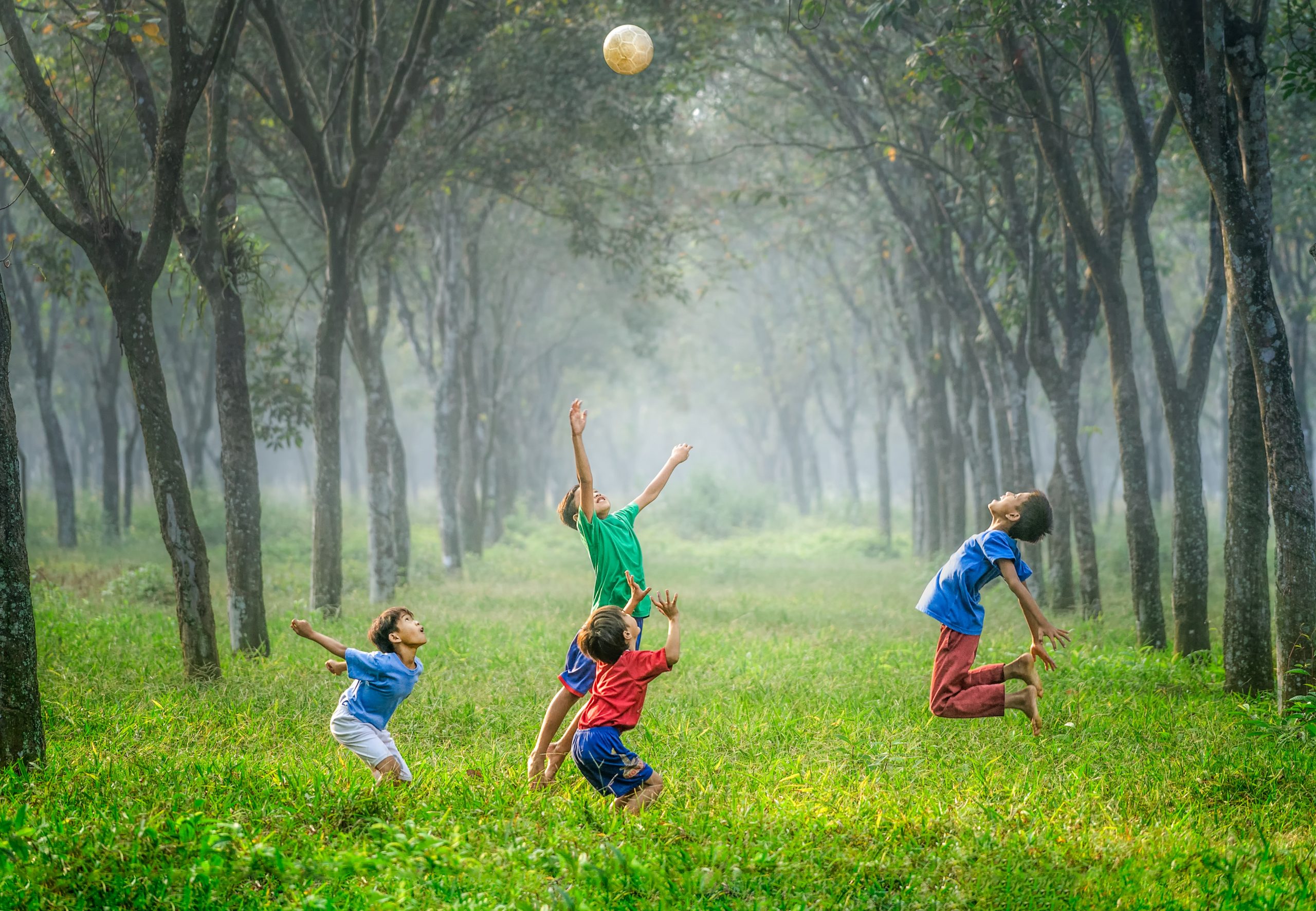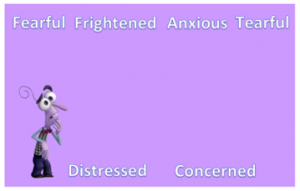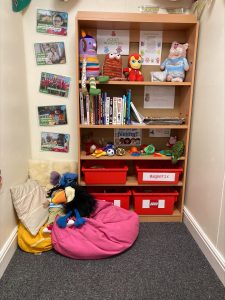
December 5, 2022, by Rupert Knight
Paving the path to happiness: supporting children’s mental health in the primary classroom
As teachers, we are all very aware of the rapidly increasing rate of mental health difficulties in children and adolescents within our schools. In this blog, Flo Nattrass, Mental Health Lead at Burbage Junior School in Leicestershire shares strategies for responding to this challenge. Flo also has an MSc in child and adolescent mental health.
Why are we talking about children’s mental health?
Recent statistics gathered by The Mental Health of Children and Young People in England Survey (2020), show that 1 in 6 children are experiencing a mental health difficulty which is an increase from 1 in 9 in 2017. However, this figure doesn’t incorporate the many children who are encountering feelings of anxiety, low self-esteem and general difficulties managing their emotions. And this was a widespread issue before a global pandemic sent us into a tailspin!
It is commonly understood that in order to learn, succeed and flourish, children need to have positive mental health and feel listened to and understood (Allen, 2020; Thynne, 2022). Without this, children can become disengaged, thus having a negative impact on their behaviour and, in turn, impacting the role of the class teacher. In response to this, the Department for Education, in conjunction with Public Health England, have published guidance, Promoting Mental Health and Wellbeing in Schools and Colleges, detailing how schools can create a whole school approach to promoting positive mental health and wellbeing.
As with many things in education, it can take time for new recommendations and practices to reach the classroom. However, there is a wealth of easily accessible information and activities that we can embed into our teaching practice to support this.
Whilst there is huge pressure on school timetables, and it can be difficult to find time for anything which isn’t directly curriculum related, as Mental Health Lead for my school, I have made the decision to carry out a range of activities with my pupils on a regular basis (and have asked my colleagues to do the same), some of which I share in this blog.
Activities and resources to support mental health
These ideas are centred around a whole class approach. All children have mental health and providing every child with the tools and information to manage and understand their own has a huge impact. However, these ideas can also be adapted if working with individual children and specific mental health needs following advice from the school SENDCo or external agencies.
Gratitude journals:
The purpose of a gratitude journal is to provide an opportunity for children to reflect on the things they can be grateful for. I encourage the children to think about the previous week and give them the time to draw or write their thoughts, thinking of a person or situation that has made them feel happy. It is important not to steer the children’s reflections in any direction as this can add pressure to the exercise. Laura Boniface founder of The Kindness Curriculum, has a range of gratitude journal activities on her Instagram page.
One of the lovely things to come out of this is the discussion around being grateful for the smallest of things; for example, in one session the children talked about hearing the birds chirping first thing in the morning. Finding these small moments can bring about a more positive mind set.
Daily check-ins:
There are many ways to enable check-ins with the children. In my classroom, I use the characters from the Disney film ‘Inside Out’. Joy, Sadness, Disgust, Anger and Fear. The children have their names on individual cards, starting on ‘Joy’. If their moods change, for whatever reason, they can then move their name to one of the other emotions. When I see their name has moved, I then ensure I speak to that child, ideally before the next playtime.

An additional strategy when using the check-ins is to allow the children to put a tick on their card if they want to be spoken to. Sometimes children feel reassured just knowing that I understand how they are feeling, others want to actually talk through their concerns.
Daily check-ins are a way to promote children’s emotional literacy as long as conversations around the different emotions have taken place to ensure a good enough understanding. The blob tree is one of my favourite resources for this. The idea is that The Blobs elicit conversation about what emotion or situation they might represent, and it allows children to explore different emotions and scenarios. There is no right or wrong answer and the conversations I have had with children are wonderful.
Worry boxes:
Following Ofsted’s investigation into sexual harassment and abuse in schools, it is now expected that all children should know how they can report any incidents and express concerns and this is commonly done through a worry box. In my school, there has been some discussion around the age appropriateness of worry boxes and Year 3 and 4 have worry monsters instead. From experience, I have learnt the importance of not allowing the children to think that the monster eats the worries and they disappear. The conversation is best framed around the monster easing the worry, being there to share the weight of the worry and helping to overcome it.
On a recent webinar I attended with Chris Calland and Nicky Hutchinson, they spoke about a ‘chat box’ for older children. They discussed that children may want to share a thought or feeling about something, which to them isn’t necessarily a worry.
Mindfulness:
There are many different ways to use mindfulness with children and encourage them to practise it – although I have lost count of the number of times I have mentioned mindfulness and the children go to cross their legs and try the traditional posture for meditation!
Teaching the children about different types of breath work, and helping them to understand how that sequence of breaths helps to reduce anxiety and stress, has been incredibly important for my class. A very simple ‘in for 4 and out for 6’ is an effective technique that allows the children to see how when their out breath is longer, it slows down their heart rate – a common effect of anxiety and worry.
This can be adapted in different ways depending on the age of the class. I’ve given younger children teddies (or bean bags) to place on their tummies to watch rise and fall as they breathe in and out.
Many schools use the ‘five finger breathing’ exercise to help support children who have become unsettled or dysregulated. I’ve also taught my class the ‘box/square breathing’ technique.
In addition to the breath work, I regularly use the ‘5 Senses Mindfulness Exercise’, taking time to be outdoors with my class.
I’ve found that this is a great technique to use both in everyday practice and for when a child is struggling with anxieties. Allowing them to block out those inner thoughts and focus on what is directly around them provides calm and reassurance. The clouds also provide a great focus for mindfulness whereby the children can sit or lay on the ground and watch the clouds pass or imagine what shapes or images they can see.
One thing that I find is really important with mindfulness is that I lead by example and practise it with the children. Not only does it show that I value it, but it is also a moment of time where I can forget about the pile of marking or the data that needs to be collated and find a tiny bit of calm in my day!
There are many great websites that provide resources, videos and exercises for mindfulness. My favourite is Headspace, which provides guided meditations along with short breathing exercises that allow the children to follow a character or object – ‘Breathe with the Cat’ is frequently requested in my classroom! All teachers can sign up for a free subscription.
Websites like GoNoodle provide different guided videos for dance, stretches and breath work. The organisations Cosmic Kids Yoga and Relax Kids are other schemes that I use in my classroom.

Affirmations:
These are an effective way of promoting a positive and growth mind set for children as well as being useful when solving disputes.
This year I have created an ‘Affirmation Station’ for my classroom. I have put a mirror on my classroom wall and around it placed different ‘I am…’ statements. In the morning, the children can stand in front of the mirror and choose an affirmation for the day and when they answer the register they can reply with their affirmation. I’ve also tried displaying different affirmations on the backs of children’s chairs allowing the class to see a range of them whilst working and moving about the room.
Calm corners:
Calm corners provide a designated space to gather together a range of tools and activities to support mental health and the development of emotional literacy which children are then able to access freely. My calm corner includes feelings cards, the worry box, brain breaks, positive self-talk and breathing technique prompts. An important point to remember though is that we need to spend time explaining these resources to the children to ensure that the activities are meaningful.
Jen Foster (Good Morning Ms Foster) speaks frequently about the importance and usefulness of a calm corner. On her Instagram and website she provides resources and information, including ideas discussed in this post.

Your own lifejacket!
Whilst I have focused on children’s mental health, it is important that we remember our own. The famous phrase, “Inflate your own lifejacket before someone else’s” is so very true when it comes to teaching. Ensuring we take the time to switch off from teacher mode and enjoy the things that make us happy and healthy means that we are in a better frame of mind to support and nurture our pupils.
The education community is so vast and so supportive. Whilst I hope there are some small take aways from this blog, there is a never-ending supply of ideas and information if we have the time to look for it. But we should never put pressure on ourselves to have it all in place, all in one go. Ultimately, the most important thing for children’s mental health is the relationships they build with their teachers and support staff. Nurturing, supporting and showing them that they are enough will have the biggest impact.
Some questions to ponder
– What one thing can you begin to add to your classroom environment and routine to positively impact the mental health of your pupils?
– What challenges could you face when pupils are experiencing a mental health difficulty?
– How could your presence and teaching practice impact children’s mental health?
– What do you do to ensure your mental health is supported and made a priority?
Useful Resources
I get a lot of ideas and information from podcasts and organisations centred around children’s mental health. Dr Pooky Knightsmith is a mental health educator and has recorded a podcast called Pooky Ponders. On here she discusses many topics around children’s mental health and the wellbeing of families. When you sign up to her mailing list, at the end of each article she provides a book suggestion linked to the topic. If you’re interested in the scientific and psychology side of mental health and keen to learn about existing research, the Association for Child and Adolescent Mental Health (ACAMH) have some very interesting episodes that are very relevant to teaching.
In addition, The Anna Freud Centre are a brilliant organisation that publish and discuss a wealth of issues around children’s mental health. One particularly helpful section of their website is their resources section in which you can find different PowerPoints and information that will better equip you to manage and understand children’s mental health more confidently. YoungMinds and Place2Be are two charities that provide information and training on children’s mental health and they keep up to date with recent research findings and any governmental changes.
If your school has an Emotional Literacy Support Assistant (ELSA), they most likely have a subscription to the ELSA website. On here there are activities that you can download (some are free, and some need a subscription to access them) that are aimed at specific needs. For example, I have used several activities that promote a positive self-esteem or allow children to understand and manage their anger. An alternative website is ELSA support which provide free and paid for resources.
Useful Books
Finally, listed below are a range of books that have informed my teaching practice:
o Allen, V. 2020., Supporting Behavioural, Emotional and Social Difficulties in School. Oxon: Routledge
o Bates, A. 2021., Miss I don’t give a sh*t: Engaging With Challenging Behaviour in Schools. London: SAGE
o Calland, C & Hutchinson, N., 2022. Tackling Anxiety in Schools: Lessons for Children aged 3-13. Oxon: Routledge
o Cowley, A., 2019. The Wellbeing Toolkit: Sustaining, Supporting and Enabling School Staff. London: Bloomsbury
o Earnshaw, L., 2020. My Happy Mind: Help your child build life-long confidence and resilience. London: Penguin
o Howard, C, Burton, M, Levermore, D & Barrell, R., 2017. Children’s Mental Health and Emotional Well-Being in Primary Schools. London: SAGE
o Peters, S., 2018. My Hidden Chimp. London: Studio Press
o Shotton, G & Burton, S., 2019. Emotional Wellbeing: An Introductory Handbook for Schools. Oxon: Routledge
o Thynne, R., 2022. Behaviour Barriers and Beyond. Oxon: Routledge
References
Allen, V. 2020., Supporting Behavioural, Emotional and Social Difficulties in School. Oxon: Routledge
Thynne, R., 2022. Behaviour Barriers and Beyond. Oxon: Routledge
No comments yet, fill out a comment to be the first

Leave a Reply